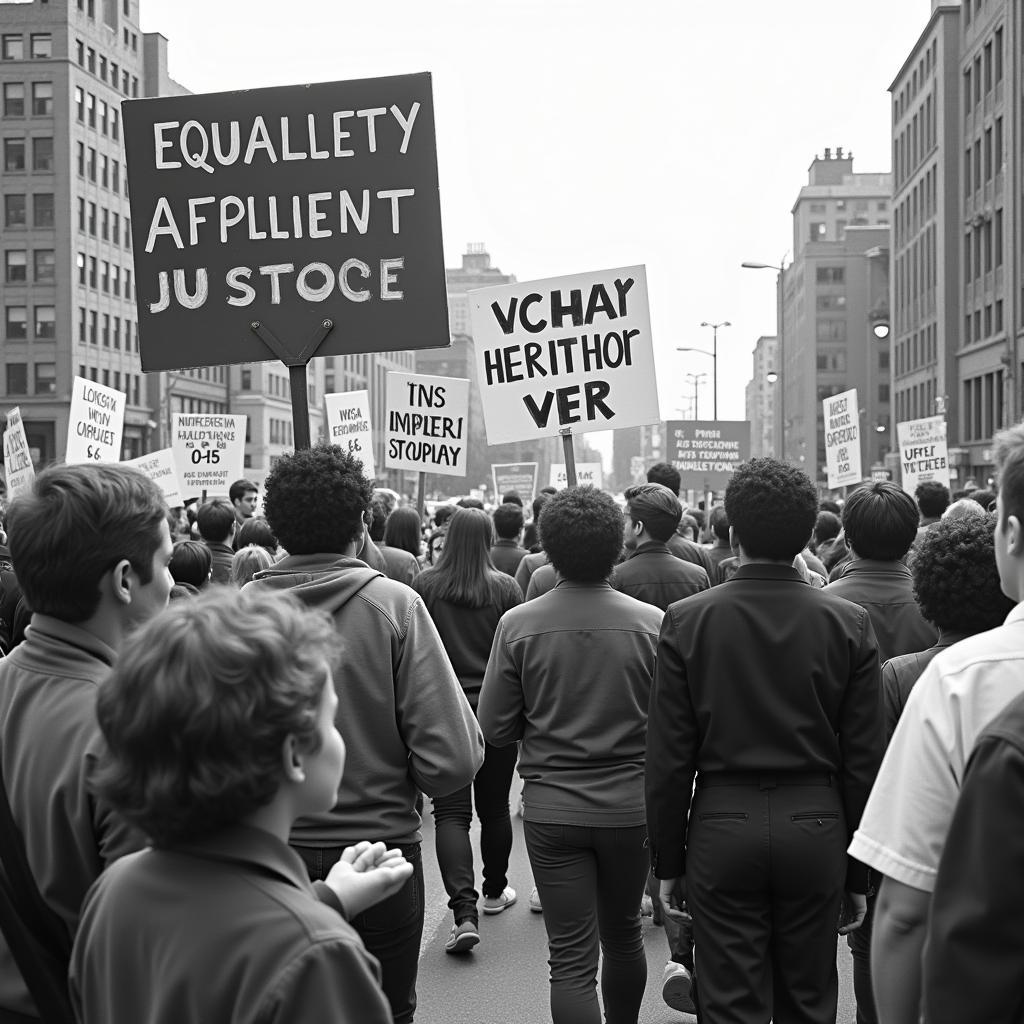The Affluent Society Apush Definition describes the period of economic prosperity in the United States following World War II. This era, roughly from 1945 to 1970, saw a significant rise in consumer spending, the growth of the suburbs, and the expansion of the middle class. However, beneath the veneer of prosperity, the “affluent society” also masked underlying social and economic inequalities, which became increasingly apparent as the era progressed.
What Does “The Affluent Society” Mean in the Context of APUSH?
The term “The Affluent Society” is directly linked to economist John Kenneth Galbraith’s influential 1958 book of the same name. In his work, Galbraith critiqued the focus on material wealth and consumerism while simultaneously neglecting public services and infrastructure. He argued that while private consumption boomed, public sectors like education and transportation were underfunded, creating a societal imbalance. This concept is crucial for understanding the social and political landscape of the post-war era in the APUSH curriculum. It highlights the inherent contradictions of a society focused on material wealth while facing significant social challenges.
 Post-War Consumerism Boom in America
Post-War Consumerism Boom in America
The Rise of Consumer Culture and its Impact
The post-war economic boom fueled a surge in consumerism. Increased disposable income and the availability of credit allowed Americans to purchase a wide array of consumer goods, from cars and televisions to washing machines and refrigerators. This rise in consumer spending drove economic growth and contributed to the expansion of the middle class. The automobile industry, in particular, flourished, leading to the development of suburban communities and the construction of the interstate highway system. However, this consumer culture also began to raise questions about the true meaning of progress and the potential downsides of material wealth.
The Other Side of the Coin: Poverty and Inequality Amidst Affluence
While many Americans enjoyed increased prosperity, not everyone benefited equally. Poverty persisted, particularly among minority groups and in inner cities. Galbraith’s critique highlighted the disparity between private affluence and public squalor. The focus on consumer goods often overshadowed the need for investment in public services, exacerbating existing inequalities. The Civil Rights Movement of the 1950s and 1960s brought these issues to the forefront, challenging the notion of a truly “affluent society” for all.
 Poverty and Inequality in Post-War America
Poverty and Inequality in Post-War America
The Affluent Society and the Cold War
The economic prosperity of the post-war era played a significant role in the Cold War. The United States’ economic strength was seen as a key advantage over the Soviet Union, and the “American way of life,” characterized by consumerism and material abundance, was presented as a model for the world. This competition extended beyond military might and into the realm of ideology, with both superpowers vying for global influence.
Was it Truly an Affluent Society for All?
The idea of an “affluent society” is complex and multifaceted. While the post-war era witnessed unprecedented economic growth and a rise in living standards for many Americans, it also masked underlying issues of poverty, inequality, and social unrest. The term itself, as used in the APUSH context, invites critical analysis of this period, prompting students to consider the limitations and contradictions of post-war prosperity.
 Civil Rights Movement Challenging the Notion of Affluence for All
Civil Rights Movement Challenging the Notion of Affluence for All
Conclusion: The Legacy of the Affluent Society in APUSH
The affluent society APUSH definition represents a crucial turning point in American history. It highlights the complexities of post-war prosperity, revealing both its achievements and its shortcomings. Understanding this period is essential for grasping the social, political, and economic forces that shaped modern America.
FAQ
-
What were the main characteristics of the affluent society?
Increased consumer spending, suburban growth, and expansion of the middle class. -
Who coined the term “The Affluent Society”?
Economist John Kenneth Galbraith. -
What were some of the criticisms of the affluent society?
Neglect of public services, increasing inequality, and excessive focus on material wealth. -
How did the affluent society relate to the Cold War?
It showcased the economic strength of the United States as a contrast to the Soviet Union. -
What groups were often excluded from the benefits of the affluent society?
Minority groups and those living in poverty. -
What was the significance of the automobile industry in the affluent society?
It fueled economic growth and contributed to the development of suburbs. -
How did the affluent society impact the Civil Rights Movement?
It highlighted the disparities between white affluence and the continued struggle for equality faced by African Americans.
Common Scenarios Related to the Affluent Society in APUSH:
Understanding the concept of the affluent society can help explain the rise of suburbanization, the growth of consumer culture, and the emergence of the Civil Rights Movement. It also provides context for analyzing the social and political debates of the 1950s and 1960s.
Further Exploration:
Explore related topics such as the Cold War, the Civil Rights Movement, and the impact of consumerism on American society.
Need further assistance? Contact us: Phone: 02043854663, Email: [email protected], or visit us at Zone 34, Bac Giang, 260000, Vietnam. We have a 24/7 customer support team.